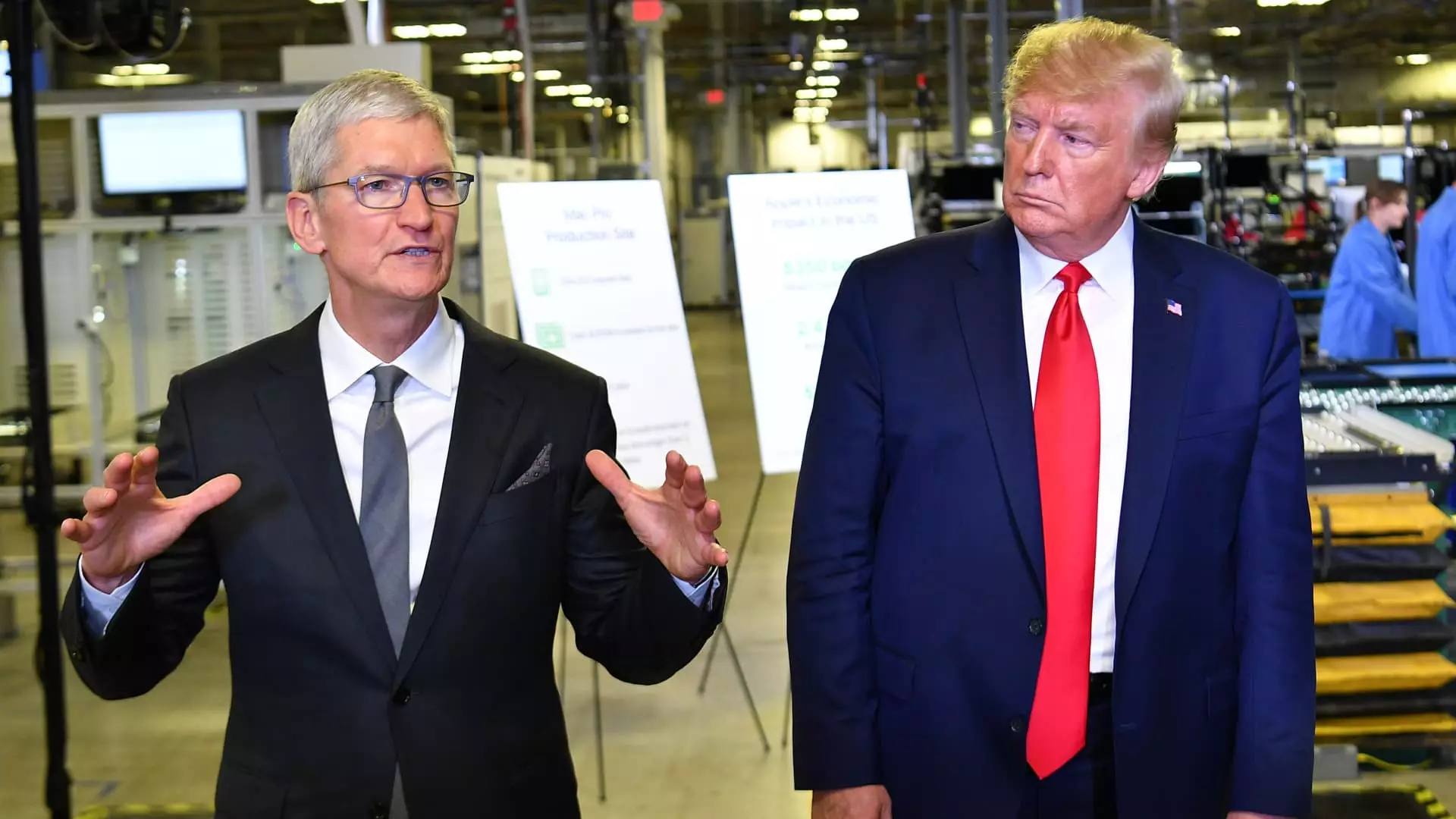In an unexpected turn of events, President Donald Trump’s recent social media post has triggered a wave of concern among Apple investors and consumers alike. By announcing the possibility of a staggering 25% tariff on iPhones made outside the United States, Trump has placed Apple at the heart of a brewing economic storm. The implications are vast, paving the way for a potential shift in Apple’s manufacturing strategy while simultaneously raising questions about consumer pricing and market stability. With shares dipping roughly 3% in premarket trading, the financial repercussions of this bold statement are already being felt across Wall Street.
Manufacturing Dynamics: A Shift in Focus
Historically, Apple’s manufacturing has been heavily reliant on China, a practice that has fostered the company’s highly efficient production methods but has also exposed it to the whims of international trade policies. Over the past couple of years, however, Apple has begun to diversify its manufacturing operations by showing interest in India, where friendly trade relations with the United States could alleviate some tariff pressures. Still, Trump’s insistence that all iPhones sold in the U.S. should be manufactured domestically resurrects the question of whether such a strategy is feasible or economically sound.
Some analysts predict that manufacturing iPhones in America could hike their price to astronomical levels—with estimates suggesting a potential retail price of $3,500 for what is currently a $1,000 device. This alarming prospect puts not only Apple’s profit margins at risk but also questions consumer accessibility to their products. Cost, a critical factor in consumer electronics, could alienate budding buyers who have less disposable income. The vast gulf between production costs in China and those in the U.S. makes it imperative for market analysts to reevaluate their outlook.
The Trump-Cook Nexus: An Uneasy Alliance
The relationship between Trump and Apple CEO Tim Cook has always been a double-edged sword, entangled in business dealings and public scrutiny. They met recently, a meeting that seemingly failed to quench the tensions highlighted by Trump’s tariff threats. Cook, who previously supported Trump’s inauguration with a substantial contribution, now finds himself dismissively caught in the political crosshairs of a trade war. What was once a representation of mutual benefit now appears uncertain. Is Trump’s push for increased domestic manufacturing a genuine plea for American jobs, or merely a political maneuver to bolster his economic agenda?
In response to escalating tensions, Apple announced plans for a $500 billion investment aimed at bolstering U.S. development initiatives, which includes AI server production. But the question remains—can this investment mitigate the fallout from potential tariffs? The company’s cautionary stance regarding an increase in expected costs for tariffs—up to $900 million—illustrates a proactive yet hesitant approach in navigating these tumultuous waters.
Broader Trade Implications: An International Ripple Effect
Trump’s tariff ultimatum is not limited to Apple; his broader trade policy seems intent on exerting pressure on various corporations that operate globally, including the imposition of a hefty 50% tariff on European Union products. This aggressive posture signals an intensification of trade tensions that could destabilize not merely the tech sector, but many facets of global commerce. Such a strategy of raising tariffs could prompt retaliatory actions from affected countries, ultimately undermining U.S. economic interests.
Moreover, the relationship between Apple and key manufacturing partners like Foxconn is also at risk. The assembly giant is pouring $1.5 billion to expand its own operations in India, a clear indicator of the shifting landscape. With such moves from major players, the future of localized manufacturing remains an intricate web of strategy and necessity, as companies strive to adapt to an unpredictable environment.
Catching the Consumer’s Eye: Innovative Alternatives Amidst Incentives
While trade concerns swirl overhead, Apple faces another significant challenge: dwindling demand in China. To counteract this downturn, Apple has upped its trade-in incentives for iPhones, hoping to entice consumers amid reduced enthusiasm. This effort reflects a broader struggle not just against tariffs, but a market under pressure from international relations and regional economics. It raises a pertinent question: how can Apple innovate its way through a landscape marred by political manipulation and shifting consumer behavior?
As the tech giant stands at this crossroads, the evolving dialogue surrounding tariffs, domestic production, and consumer affordability will undoubtedly shape its next move. It is a precarious balancing act that requires keen foresight and an appetite for adapting to change—qualities Apple must embody to thrive amidst the mounting challenges ahead.

